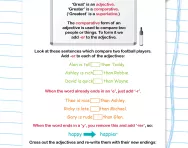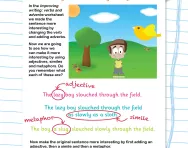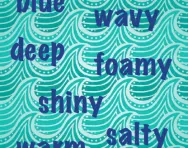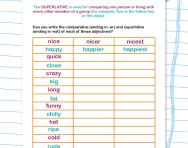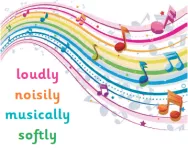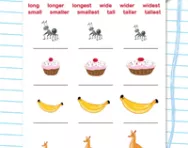Important update from TheSchoolRun
For the past 13 years, TheSchoolRun has been run by a small team of mums working from home, dedicated to providing quality educational resources to primary school parents. Unfortunately, rising supplier costs and falling revenue have made it impossible for us to continue operating, and we’ve had to make the difficult decision to close. The good news: We’ve arranged for another educational provider to take over many of our resources. These will be hosted on a new portal, where the content will be updated and expanded to support your child’s learning.
What this means for subscribers:
- Your subscription is still active, and for now, you can keep using the website as normal — just log in with your usual details to access all our articles and resources*.
- In a few months, all resources will move to the new portal. You’ll continue to have access there until your subscription ends. We’ll send you full details nearer the time.
- As a thank you for your support, we’ll also be sending you 16 primary school eBooks (worth £108.84) to download and keep.
A few changes to be aware of:
- The Learning Journey weekly email has ended, but your child’s plan will still be updated on your dashboard each Monday. Just log in to see the recommended worksheets.
- The 11+ weekly emails have now ended. We sent you all the remaining emails in the series at the end of March — please check your inbox (and spam folder) if you haven’t seen them. You can also follow the full programme here: 11+ Learning Journey.
If you have any questions, please contact us at [email protected]. Thank you for being part of our journey it’s been a privilege to support your family’s learning.
*If you need to reset your password, it will still work as usual. Please check your spam folder if the reset email doesn’t appear in your inbox.
What are comparatives and superlatives?
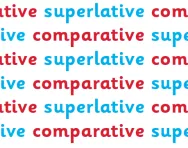
What are the comparative and the superlative?
Adjectives and adverbs have three different forms: the positive, the comparative and the superlative.
The comparative form is used to compare one person, thing, action or state to another:
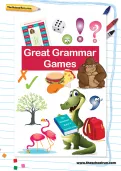
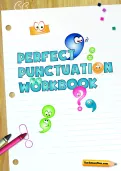
Download Fantastic FREE Grammar Resources!
- Perfect Punctuation Workbook
- Great Grammar Games Pack
- PLUS 100s of other grammar resources
The superlative form is used to compare one thing to all the others in the same category; in other words, when the comparison is taken to the highest degree possible, for example:
The comparative and superlative are formed differently depending on the word's positive form.
- Usually we add the suffixes -er and -est: warm / warmer / warmest
- When the adjective ends in -e we drop it and add -er and -est: large / larger / largest
- Adjectives that end in one consonant double it before adding -er and -est: red / redder / reddest
- Adjectives ending in -y change it to i and add -er and -est: juicy / juicier / juiciest
- Adverbs ending in -ly usually add the words 'more' (comparative form) and 'most' (superlative form): slow / more slowly / most slowly; lazily / more lazily / most lazily
- Some adjectives use 'more' for the comparative form and 'most' for the superlative: famous / more famous / most famous
- Some comparative and superlative forms of adjectives and adverbs are irregular: bad / worse / worst; much / more / most; well / better / best
Primary-school grammar: comparative and superlative
Children in Year 1 are taught how to use comparatives and superlatives (without being told that this is what they are called). They are taught that certain adjectives can have the endings (suffixes) -er and -est added to them to make new words, for example: dark / darker / darkest, fresh / fresher / freshest, etc.
Later in Key Stage 2, children will be taught how to add these endings to words ending in -y, for example: heavy / heavier / heaviest; happy / happier / happiest; nutty / nuttier / nuttiest. (The rule here is that you remove the -y and then add -ier or -iest).
The correct term for the endings -er and -est is suffix (suffixes are groups of letters added to the end of a word). Children in Years 5 and 6 learn about various different suffixes and prefixes and how to add them to root words.
Are children tested on their understanding of comparatives / superlatives?
Children will probably not be specifically asked about comparatives and superlatives, but they may be asked to add a suffix to a root word. For example, they might be asked to add a suffix to the word juicy:
Possible answers are juicier, juiciest, juiciness or juicily, so the answer does not have to be a comparative (juicier) or a superlative (juiciest).
At-home practice to help with comparatives and superlatives
- Ask your child to go on a word hunt. Get them to look in books and magazines all over the house and then write down any comparatives and superlatives they find (help them prepare two headed columns on a large piece of paper first).
- Give your child three superlatives to put into their own sentence. For example, if you suggested calmest, earliest and fastest, they could make the sentence: 'He was the calmest student in the class, who always arrived earliest and finished his work fastest.'
- Give your child some sentence starters containing comparatives for them to finish. For example: 'The window is bigger than....' (your child could finish with 'the kettle') or 'The oven is hotter than....' (your child could finish with 'the fridge').


